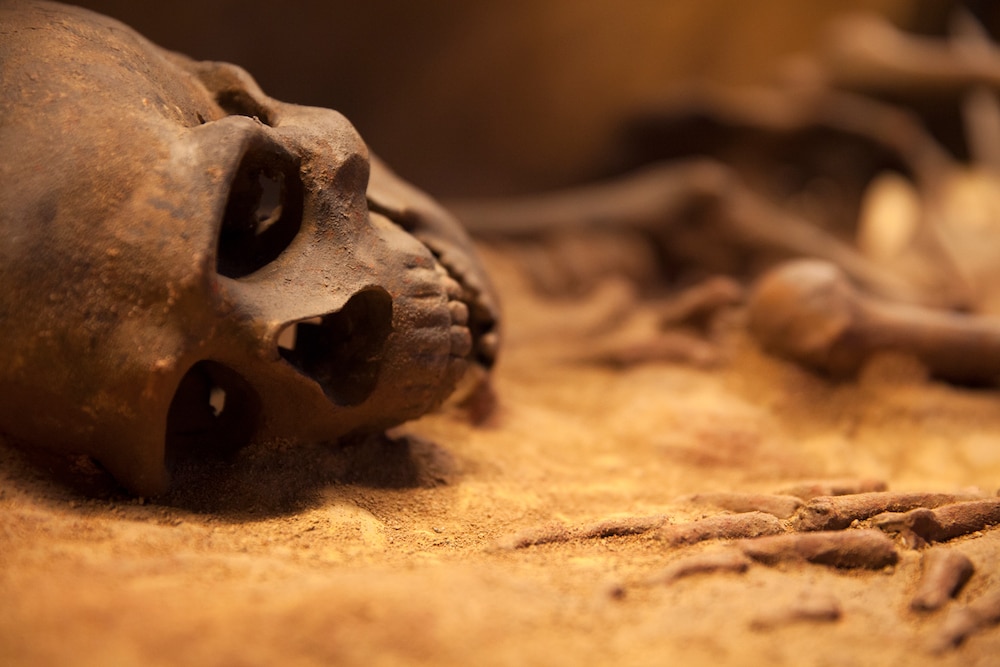Create a free profile to get unlimited access to exclusive videos, sweepstakes, and more!
Indigenous North Americans were doing skull surgery 3,000 years ago
Sometimes you actually do need another hole in your head.

Going in for surgery is a stressful and sometimes dangerous endeavor even in modern times. Looking back into the distant past, it’s difficult to imagine how doctors and patients endured cutting into the body without the benefit of anesthetics, antibiotics, and post-operative pain medications. This might be one of the times when not knowing what you are missing was a benefit to humanity, because while modern medicine might be a relatively new development, surgery certainly is not.
Diana Simpson, a bioarchaeologist from the University of Nevada, Las Vegas, had the opportunity to examine the remains of a man who lived at the Little Bear Creek site in modern day Alabama between 3,000 and 5,000 years ago. Simpson’s investigation revealed an unusual skeletal feature in the form of a hole in the forehead, which is indicative of an intentional surgical operation into the skull. Simpson’s findings were presented at the annual meeting of the American Association of Biological Anthropologists.
While skull surgeries date back to at least 13,000 years ago in what is now Morocco, this discovery marks the oldest operation of its kind in North America, beating out the previous record by a full 2,000 years.
Uncovering the results which led up to the operation and what happened afterward can be difficult when we’re peering thousands of years back in time, but that’s precisely what anthropology and archaeology are good at.
Analysis of the remaining bone, as well as associated fractures, suggest a couple of potential causes leading up to the life-saving surgery. In addition to the opening in the skull, the remains showed signs of injury including fractures on the left arm, left leg, and collarbone, as well as injury above the left eye. Those wounds are consistent with a fall from a height onto the left side, or a violent attacker who favored one side over the other. In either case, the injuries were life threatening and required intervention.
The area around the forehead hole showed evidence that bits of bone had been scraped out, likely to reduce swelling on the brain caused by the trauma. Luckily for the man, the surgery appears to have been successful. The state of the skull, particularly regrowth of new bone around the hole, suggest that the patient survived for at least a year after the surgery.
It’s unclear if operations of this kind were a common practice among the people of the time, or if this was a special circumstance owing to the unique social stature of the patient. Judging from items found in the grave with him, which included bone pins and possible tattooing tools made of modified deer and turkey bones, it’s believed the man may have been a shaman.
This discovery is likely to be the last to be uncovered from the Little Bear Creek site. The remains, along with those of 162 other individuals, were originally excavated in the 1940s and were kept in a museum for 70 years while they were studied. After Simpson’s investigation, the remains were returned to the local indigenous community for reburial. That’s as it should be, and we’re grateful for the opportunity to have learned about the lives and practices of the peoples who populated this continent long before any of us got here.
It's a well needed reminder of the ingenuity and compassion of indigenous cultures and a welcome window into the past of our species. That said, in this specific instance, it’s one we’re glad to have moved forward from. While a drill to the forehead and bone scraping absolutely saved that man’s life, we can’t imagine the pain he must have suffered, and we don’t want to.
Still, skull surgeries couldn’t be what they are today without the lessons learned by prior generations over the course of thousands of years. That said, we’ll take the empty blackness of hospital-grade anesthesia every single time, please and thank you.


























